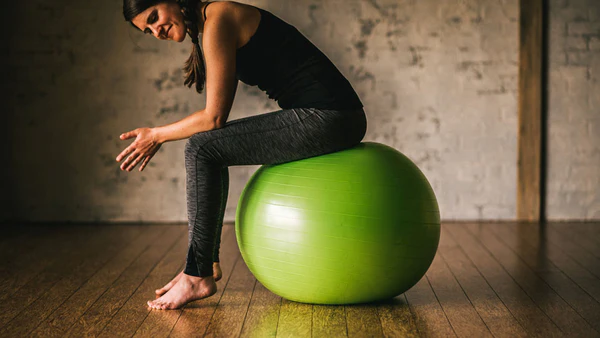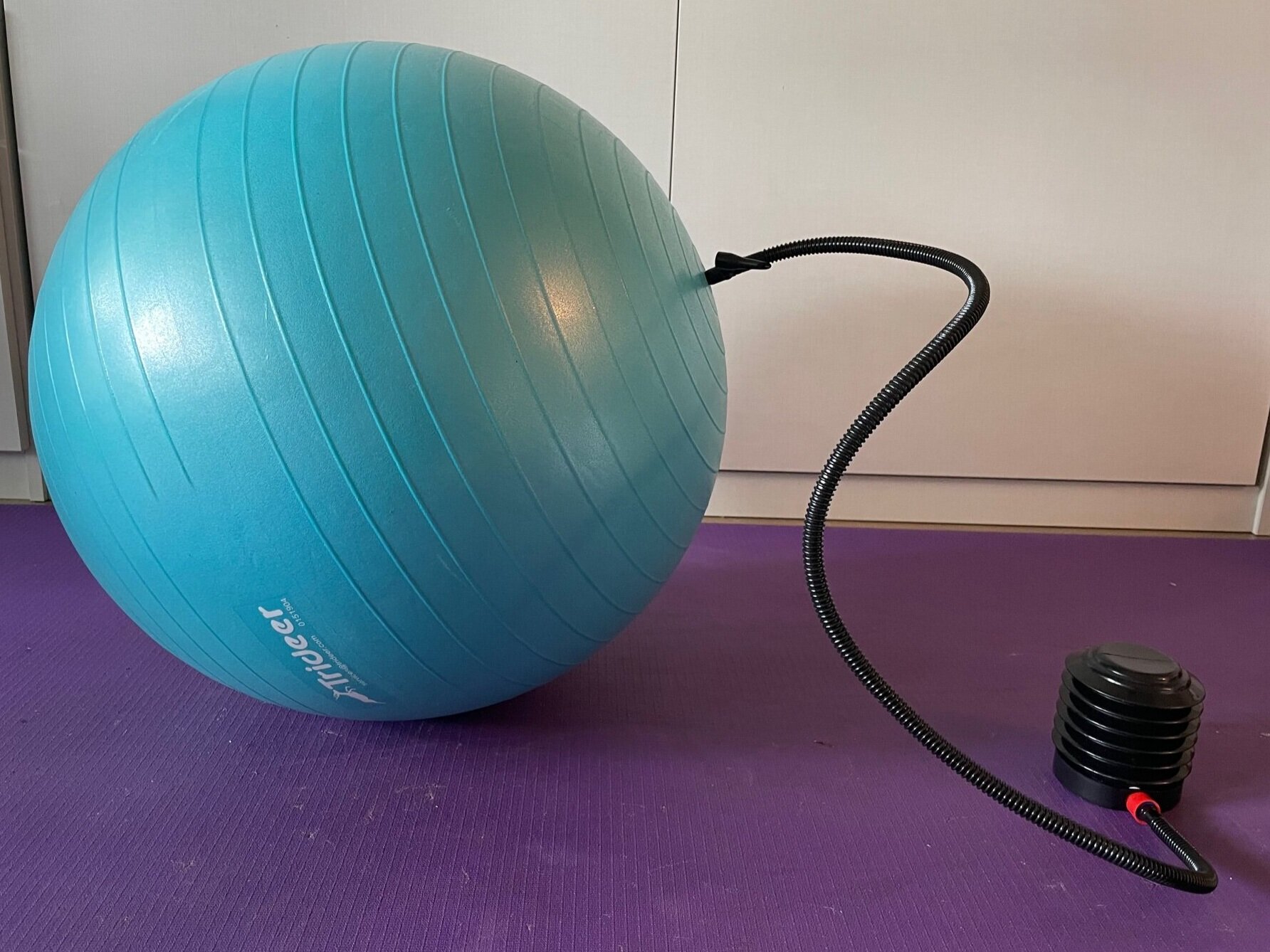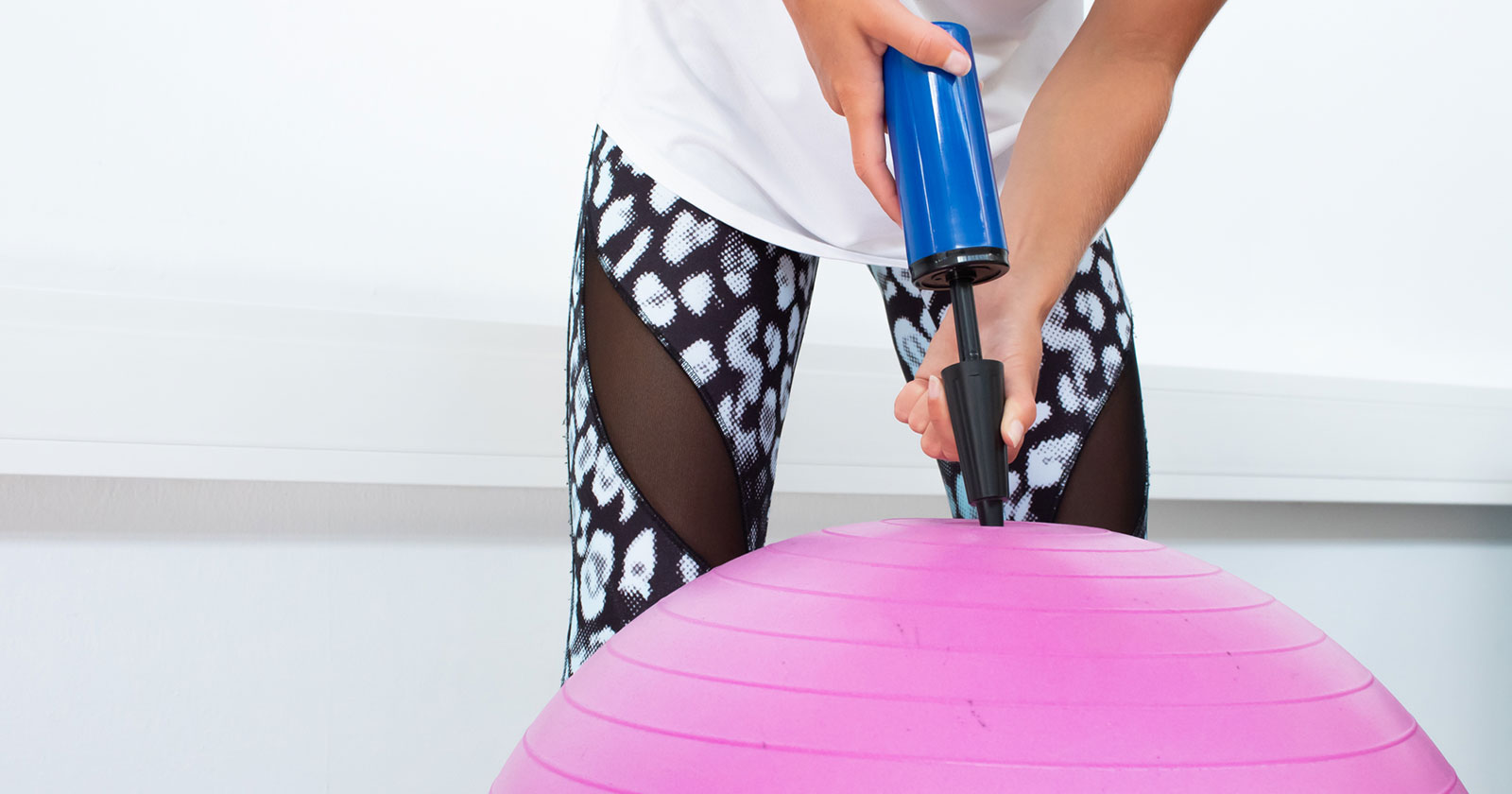Inflating an exercise ball correctly is essential for its effectiveness and safety during workouts. An improperly inflated ball can lead to instability or even injury. Today we will walk you through the necessary steps to ensure your exercise ball is inflated to the optimal size and firmness, providing you with a stable and supportive platform for your exercises. Whether you’re using it for yoga, Pilates, or strength training, getting the inflation right will help you maximize the benefits of your fitness routine.

Contents
How To Inflate An Exercise Ball Properly?
Inflating an exercise ball isn’t as simple as pumping it full of air. Instead, it involves a precise process to ensure safety and enhance workout efficacy.
Step 1: Initial Inflation
Take your air pump – electric or manual, it doesn’t matter. Inflate the ball to approximately 80% of its suggested diameter. For example, if the manufacturer recommends a 65cm size, inflate it to around 52cm initially.
Step 2: Resting Time
After initial inflation, let the ball sit idle for 24 hours. This resting period allows the material of the ball to stretch and become accustomed to the new form.
Step 3: Final Inflation
Post-resting, resume the inflation process until the ball reaches the manufacturer’s suggested diameter. Electric air pumps tend to be more efficient for this final phase of inflation.
Step 4: Test The Ball
Once fully inflated, test it out. Remember, the right pressure of an exercise ball equates to enhanced safety, stability, and comfort. If the ball adjusts to your body’s needs during a workout, you’ve inflated it correctly.
Bear in mind that room temperature affects inflation. Ensure your surroundings maintain at least 68 degrees Fahrenheit during the process. Achieving the correct inflation can greatly improve your training regimen, supporting stability, comfort, and safety.
Essential Tools for Exercise Ball Inflation
Inflating an exercise ball to the right level of firmness is crucial for its effectiveness in your workout routines. To do this properly, you’ll need a few essential tools. Here are the essential tools you’ll need for exercise ball inflation:
1. Air Pump:
- Types: You can use either a manual hand pump or a foot pump specifically designed for inflating exercise balls. Electric air pumps can also be used for faster inflation.
- Benefits: These pumps usually come with various nozzle sizes to fit the air valve of your exercise ball, ensuring efficient and effective inflation.
2. Inflation Adapters:
- Types: Most air pumps come with a set of adapters or nozzles. Make sure the pump you choose has an adapter that fits the exercise ball’s air valve.
- Benefits: Adapters ensure that the air is pumped efficiently into the ball without leakage, which is crucial for reaching the desired firmness.
3. Measuring Tape:
- Use: To measure the diameter of the ball to ensure it has been inflated to the recommended size.
- Benefits: This will help you avoid under or over-inflation, both of which can compromise the ball’s functionality and your safety during exercises.
4. Inflation Gauge (Optional):
- Use: Some higher-end pumps come with a built-in pressure gauge, or you can purchase a separate gauge.
- Benefits: A gauge helps monitor the internal pressure of the exercise ball, allowing you to inflate it to the precise level recommended by the manufacturer for optimal safety and performance.
5. Marker or Tape:
- Use: To mark the desired diameter on the wall or floor as a reference while inflating the ball.
- Benefits: It serves as a visual guide to ensure that the ball reaches the correct size.
6. Stopper or Plug:
- Use: To seal the air valve after inflation.
- Benefits: Ensures that no air escapes once the desired firmness is achieved, maintaining the ball’s inflation level over time.
When Does An Exercise Ball Burst?
Exercise balls, also known as stability balls or Swiss balls, are generally quite durable, but they can burst under certain circumstances. Here are the main reasons why an exercise ball might burst:

-
Over-inflation: This is the most common cause of exercise ball bursts. The ball has a recommended inflation pressure limit, usually printed directly on the surface. Exceeding this limit puts excessive stress on the material, making it more prone to bursting.
-
Excessive User Weight: Exercise balls have a weight capacity limit. If the user’s weight surpasses this limit, the ball can experience strain and potentially burst. It’s important to choose an exercise ball with a weight capacity that accommodates your body weight.
-
Weakened or Worn Areas: Over time, the material of the exercise ball can weaken, especially at seams or areas of frequent pressure. This can make the ball more susceptible to bursting, particularly if it’s also overinflated or used with excessive weight.
-
Sharp Objects: Punctures from sharp objects can cause an exercise ball to deflate rapidly or even burst. Be mindful of the environment where you’re using the exercise ball and avoid placing it near anything sharp.
-
Manufacturing Defects: In rare cases, a burst might occur due to a defect in the manufacturing process. This is more likely with lower-quality exercise balls.
Frequently Asked Questions:
Can you over-inflate an exercise ball?
An exercise ball can definitely be over-inflated, which can potentially lead to bursting or damage to its integrity. If the ball feels hard to touch, this indicates over-inflation. The pressure should be immediately released to prevent harm and to extend the lifespan of the ball.
How do I know if my exercise ball is inflated enough?
Your exercise ball is correctly inflated when it feels firm but not too taut. There should be a slight give when you press down on it, indicating that it is providing the stabilization necessary for safe and effective workouts.
How can I inflate my exercise ball without a pump?
To inflate an exercise ball without a pump, you can use a bicycle tire pump or an air compressor. However, it’s important to avoid over-inflation or using industrial compressors, as they can lead to bursting.
What is the correct PSI for an exercise ball?
Exercise balls do not have a specific pounds per square inch (PSI) requirement. They are typically inflated in the range of 0.6 to 0.9 PSI. The firmness should be adjusted within this range as per personal comfort.

Hello, I’m Ravindra. Over the years, I’ve immersed myself deeply into the world of fitness and health, transforming both my body and mind. Writing has allowed me to share my journey, insights, and expertise with those just starting out and seasoned fitness enthusiasts alike. Beyond just routines and diets, I believe in inspiring others to adopt a holistic approach to well-being.
